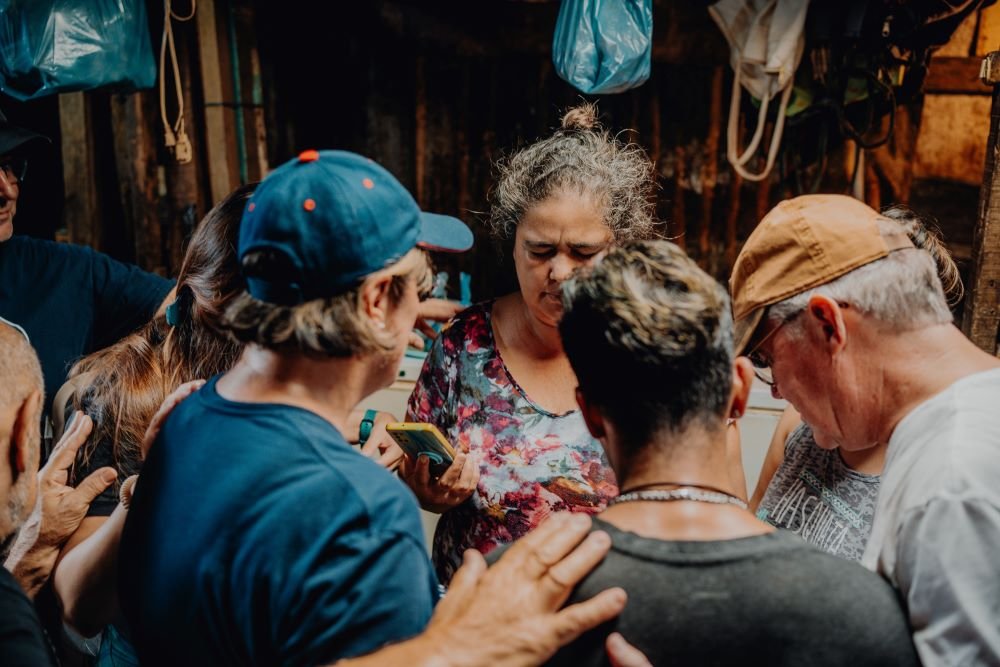Sharing Spaces
I was in a meeting a couple of weeks ago with two churches that wanted to share a building. The host church is almost 60 years old, and the church wanting to share their space was an immigrant congregation that is about 5 years old. It was a challenge to work out the details across cultural worldviews and language barriers.
The Differences
Some of the most common cultural barriers that churches may encounter include:
Perception of time— Not every culture is governed by a watch. In some cultures, if you arrive at the stated time, it is considered rude. Those coming from refugee camps have not had the luxury of watches or the need to schedule their day from hour to hour.
Conflict Resolution—Conflicts are often handled very differently in other cultures. Many cultures use mediators for communication and conflict resolution. This often frustrates Americans who are more direct in their communication style.
Food—This can be an emotional issue. A favorite food in one country might leave an awful stench in the kitchen in the view of the host church. This is often a cause of conflict.
Ownership or possession—In America, we understand owning an object—a car, a house, or personal clothing for example. In some countries, there is no concept of ownership. Objects are shared by families or groups. In refugee camps, there are no items to “own” in the tent or one room hut a family shares. All objects would be family property or community property.
Children—Children’s behavior is different from country to country. In some countries, it appears that the children are running wild with no discipline or guidance. The perception is the children could get hurt or could destroy property. In other countries, children are expected to follow strict rules that would protect the child and property.
The Conflict
While some barriers result from different cultural perspectives and values, other challenges may result from personal perceptions of ownership or entitlement. I have been a member of a host church. The congregation sharing the facility with us shared “my” preschool Sunday School classroom. I was often upset when I would arrive on Wednesday night for teacher meetings to find “my” classroom in disarray. The other class had used “my” things and “my” supplies.
Of course, these were not “my” things or “my” supplies. They were the property of the church and were to be used for sharing the stories of Jesus with young children. It took me a while to realize that. I had a poor attitude about sharing my church building and materials with others. Unfortunately, that attitude is common among church members.
I have learned a few things since sharing my Sunday School classroom—things about worldview, cultural understanding, and relationships. So, here are some suggestions for churches sharing facilities.
The Resolution
It is all about the Kingdom. The church is God’s building and uses God’s supplies. We often forget this. In an honor-shame culture, a host church brings honor to him or herself when sharing their resources. We need to be reminded that it is an honor and privilege to be in the position to share.
Joint baptism services show the fruit of the host congregation’s investment in the Kingdom. When we see how our investment of resources glorifies God and brings souls into the Kingdom, we become more supportive and tolerant.
Build Relationships
It is important to intentionally find ways to build relationships and foster understanding. Share occasional celebration meals together. Encourage members of the host church to spread out and sit with the other congregation. Even if there is a language barrier, they can be a welcoming, smiling face. Plan these joint celebrations quarterly. You could schedule them around holidays, baptismal services, or fifth Sundays. The meal could be prepared, but be sure to remember the preferences of each congregation represented. A potluck meal would provide the opportunity for conversation around the different dishes around the table.
Serve Together
Serving on a mission project together is also a great way to build relationships. It can be a community project for a school, Vacation Bible School, or a mission trip, but lasting friendships will be forged on these projects.
I know two churches who went on a mission trip to San Andres Island together. One church was poor and had members from the island on the team. The other church was a wealthy church from the suburbs. They didn’t have much in common, and there was not much interaction between the two groups. Then, they discovered both groups were following the Rockets in the playoffs. They bonded over the Rockets and eventually bonded in service on the island. For the next several years, these two groups took joint trips back to serve the churches on San Andres.
Get Creative
Be flexible and creative in discovering ways to manage finances. Occasionally the incoming congregation can provide services in lieu of rent. One incoming congregation did not have money for rent but provided all the cleaning and yard maintenance for the building. The members would show up every Saturday to mow the lawn and clean the building, leaving everything ready for Sunday morning. This was quite a savings for the host congregation.
In another situation, the host congregation agreed to reduce rent as long as the incoming congregation agreed to empty the trash and stack the chairs before they left each Sunday. Be intentional about searching for these types of creative ways to meet the needs of both congregations.
Make it Clear
To avoid misunderstandings before they occur, put all expectations in writing. Even the smallest detail should be written down. Do not assume the congregation sharing the facility comes with an American worldview on “what should be done.” Most congregations from other cultures are not looking to make problems. In their home country, it is possible there are different norms and expectations. Congregations from honor-shame cultures will want to do everything possible to honor the host church and knowing the expectations really helps.
The following list is a good place to start with your agreement:
What time is the building is available?
What rooms are available?
How much is rent? What does rent cover? When is it due?
What are the guidelines for children’s ministry?
What are the liability insurance requirements?
How is each room to be left?
Who can use office machines & supplies for copies, mailing, curriculum, etc?
Pray Together
Regular pastor’s meetings should be scheduled to pray together and share what is happening in each congregation. When you’re praying for one another, the Spirit will work to keep unity between your congregations.
Though it seems very challenging, sharing facilities should be an enriching experience for both congregations. When we see God at work in other languages and cultures, we see the beauty of God outside of the “box” of our own culture. We see Him at work on a much larger scale than our own congregation, building a kingdom of all peoples.
Sally Hinzie is a Church Consultant who has worked at UBA for many years. Her primary areas of ministry focus include church planting, bible storying training, organic church, and ministry implementation.










